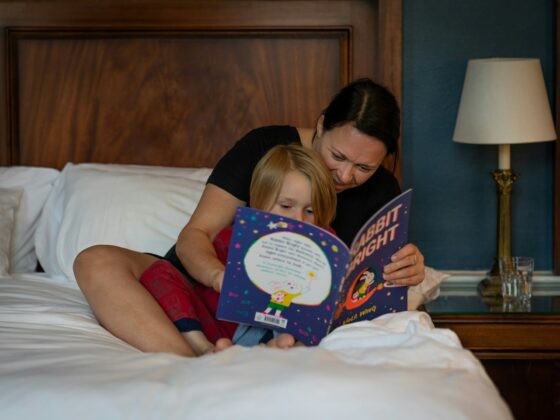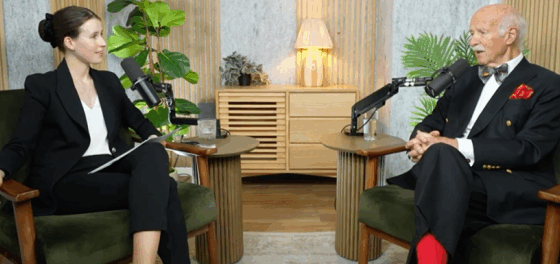
The hospitality landscape is rife with buzzwords: “bleisure,” “coolcations,” and “work-from-anywhere” are the talk of the town. Yet, for many hoteliers, these conversations are failing to translate into tangible results. Travelers are blending business with leisure, seeking cooler climates, and working from inspiring new locations, but the hotel industry has largely remained unresponsive. The data may not yet fully reflect the volume of these burgeoning trends, but this signals a crucial opportunity for proactive hoteliers to move beyond generic offerings and capture a growing market of guests seeking higher value and tailored experiences.
The disconnect between trending topics and hotel actions is apparent. Standard hotel offerings leave many travelers in these emerging categories underserved. Hotels have a clear opportunity to differentiate themselves and build guest loyalty. Instead of waiting for overwhelming statistical evidence, savvy hoteliers should be at the forefront, shaping their services to meet and exceed the expectations of these new traveler personas. Here are three key actions hoteliers should take to interpret and act on the latest trends, ensuring they capture their full impact.
1. Deep Dive into Data and Decipher the “Why”
Understanding a trend’s relevance to your specific property is crucial before taking meaningful action. Acknowledging a new buzzword isn’t enough; investigate how it appears in your market and guest data to gain a deeper understanding of its relevance. Moving beyond guesswork and manual spreadsheet analysis is essential.
To truly unlock these insights, you need a hotel business intelligence (BI) system. A modern BI platform automates the collection and analysis of data from all your key systems—your Property Management System (PMS), point-of-sale (POS), and even online guest reviews. Instead of relying on gut feelings, a BI system provides a comprehensive view of guest behavior. It can flag patterns, such as increasing lengths of stay that bridge a Thursday to a Monday (a classic bleisure indicator), correlate guest origin with on-site spending, or track booking lead times from specific markets. This technology enables you to identify emerging trends with statistical confidence, allowing you to act decisively while your competitors are still discussing it.
With this powerful analytical foundation, you can begin to dig deeper. Are you seeing longer stays that bridge weekdays and weekends? Are guests inquiring about workspaces or the reliability of high-speed internet? Is there an uptick in visitors from regions experiencing extreme heat during certain times of the year? A BI system will not only help you ask these questions but also give you the clear, data-backed answers you need to build your strategy.
2. Reimagine and Repurpose Your Physical Spaces
Once you have a handle on the trends impacting your business, the next step is to adapt your physical environment. A one-size-fits-all approach to hotel rooms and common areas will no longer suffice.
For the “work-from-anywhere” guest, this means more than just a desk and a chair. Consider creating dedicated, well-equipped workstations that feature ergonomic seating, ample power outlets, and excellent lighting for video calls. Could a lesser-used common area be transformed into a stylish and functional co-working space? Offering day passes to these spaces can also attract local remote workers, creating a new revenue stream.
Attract “bleisure” travelers by ensuring a seamless transition between work and relaxation. Offer packages that bundle a spa treatment or a happy hour credit with a room booking. Create a “Business and Leisure” section on your website to highlight your meeting facilities and proximity to local attractions.
For “coolcationers,” the focus shifts to the experience of the destination. While you can’t change the weather, you can enhance the enjoyment of it. Partner with local tour operators to offer unique excursions that capitalize on the pleasant climate, such as guided hikes, boat trips, or outdoor yoga sessions. In-room, you could provide amenities that encourage exploration, like pre-loaded transit cards or a curated guide to local parks and outdoor cafes.
3. Craft and Communicate a Compelling Value Proposition
The final, crucial step is to proactively communicate the value you now offer. It’s not enough to make these changes; you must shout them from the rooftops to the right audience.
Develop targeted marketing campaigns that address the specific needs and desires of each traveler segment. Use keywords like “work-from-hotel,” “bleisure packages,” and “summer coolcation” in your online advertising and on your website. Create dedicated landing pages that showcase the specific amenities and experiences you’ve designed for them.
Social media is a powerful tool for visual storytelling. Post high-quality photos and videos of your redesigned workspaces, your inviting leisure facilities, and the unique local experiences you offer. Collaborate with influencers who embody these travel styles to reach a broader, more engaged audience.
Ultimately, the goal is to shift the narrative from being just a place to stay to being an essential part of the travel experience. By clearly articulating how your hotel caters to their specific needs, you provide a compelling reason for potential guests to choose you over a competitor that still offers a generic and undifferentiated stay.
In a rapidly evolving travel landscape, hoteliers who thrive will be those who are not just trend spotters but trendsetters. By delving into the data, reimagining their spaces, and communicating a clear value proposition, they can move beyond the buzz and capture the loyalty and spending power of the modern traveler.
Of course. Here is a conclusion and a “Key Takeaways” section to complete the blog post.
Conclusion: From Trend-Spotter to Trend-Setter
In a rapidly evolving travel landscape, hoteliers who thrive will be those who are not only aware of the latest buzzwords but also willing to act on them decisively. The gap between the “talk” around trends like bleisure, coolcations, and work-from-anywhere and the “action” on the ground presents a golden opportunity. By moving beyond generic hospitality and embracing a data-driven, guest-centric approach, you can deliver superior value and build lasting loyalty. The time for waiting is over; the time for proactive innovation is now. By taking these deliberate steps, you can transform your property from a place that accommodates travelers to a destination that truly understands and anticipates their needs.
Key Takeaways for Hoteliers
- Invest in Data, Not Guesswork: Move beyond anecdotal evidence. Use a hotel business intelligence (BI) system to analyze your guest data and validate emerging trends. Understand the “why” behind booking patterns to make informed decisions.
- Adapt Your Physical Product: A guest’s needs have changed, and your spaces should too. Reimagine rooms and common areas to create functional workspaces that seamlessly blend work and leisure, thereby enhancing the overall experience of your destination.
- Market Your Solutions, Not Just Your Rooms: Once you’ve made changes, communicate them clearly and proactively. Develop targeted marketing campaigns and dedicated website content that speaks directly to the unique needs of bleisure, work-from-anywhere, and coolcation travelers. Show them you have the solution they’re already looking for.






